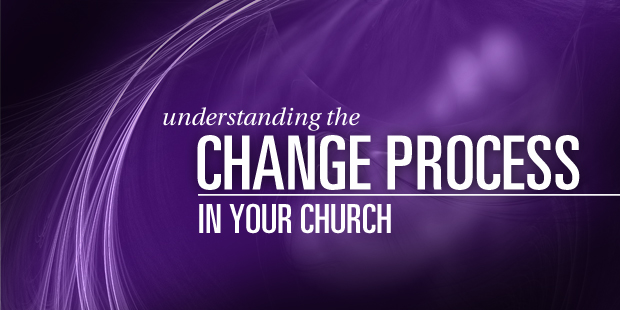
Understanding the Change Process in Your Church
Ron Johnson is not off to a good beginning; the former Apple retail leader is now CEO of JC Penney and the most recent quarterly results are not encouraging. After making wide, sweeping changes, same store sales have dropped 26 percent and stock prices are at a three-year low.
Meg Whitman, the former CEO of eBay, is attempting a turnaround at Hewlett-Packard. The challenge is daunting. Though she has a long-term strategy in place, many people believe she is moving too slowly.
A pastor of a large church recently resigned after leading the congregation in several major changes. Attendance at the church dropped precipitously as many members voted against the changes with their feet.
At another large church just twenty miles away, the pastor is moving so slowly that people are also moving out. They are waiting on this leader to provide visionary leadership, but he is simply too reticent to move forward.
Volumes have been written on change, the pace of change, and the consequences of change. In simplest terms, leaders move at a perfect pace, too slowly, or too rapidly. In this brief article, I address what fast-paced leaders should consider. I offer five basic issues these leaders should grasp.
Understand the Change Tolerance of Those Directly Impacted
Some fast-paced leaders look at the organization only from their perspective. They fail to put themselves in others’ shoes to consider what this change might feel like to those directly impacted. These aggressive leaders need to ask more questions and listen more carefully. They may be surprised to hear how those directly impacted will respond to the proposed changes.
Understand That Change Tolerance Is Contextually Driven
I have seen too many leaders move to a new area and assume that change tolerance would be very close to their previous place of leadership. If they came from an organization that dealt well with change, they might assume that the same leadership pace would work at the new organization. Unfortunately, many leaders have been burned when they discover their assumptions to be wrong. Many contextual factors affect the tolerance level of change. Again, it is incumbent upon leaders to know their contexts and how to lead in those contexts. Listening to the stories of those in the organization is vital to this process.
Understand That Most Change Resistance Is Emotional, Not Rational
Such is the reason that well-thought, calmly-presented, rationally-explained reasons for change might not be well received. The leader must understand the hearts of those impacted, not only the heads. Why are they so emotionally attached to the status quo? What stories can the leader share that would address the hearts of those feeling the changes?
Understand That Leaders Must Have Sufficient Tenure to Deal with the Change
Too many leaders initiate change but fail to see the obstacles before them. As a consequence, they often leave before the changes are fully implemented. The organization is thus left with frustrated people and a void of leadership. If a leader is seeking to lead change, he or she must be willing to stay at the organization a sufficient time to see the change accomplished, and to deal with any aftermath caused by the change.
Understand That Leaders Must Understand Themselves in Leading Change
Self-awareness is vital here. If you are a slow-change leader in a fast-paced organization, you will likely encounter frustration and impatience. If you are a fast-paced leader in a slowly-moving organization, you will likely encounter resistance and resentment. A good simple exercise is to rank yourself on your comfort with the pace of change on a scale of one to ten. Then do the same for the organization you lead. If you have a gap greater than two, you have major work to do before you even begin to lead change. Sometimes the work must be done on yourself. At other times, there is greater work to do in the organization. The gap must be closed or the leader will find himself in a position of frustration and, ultimately, failed leadership.

Tags: Change, Leadership, Thom Rainer












